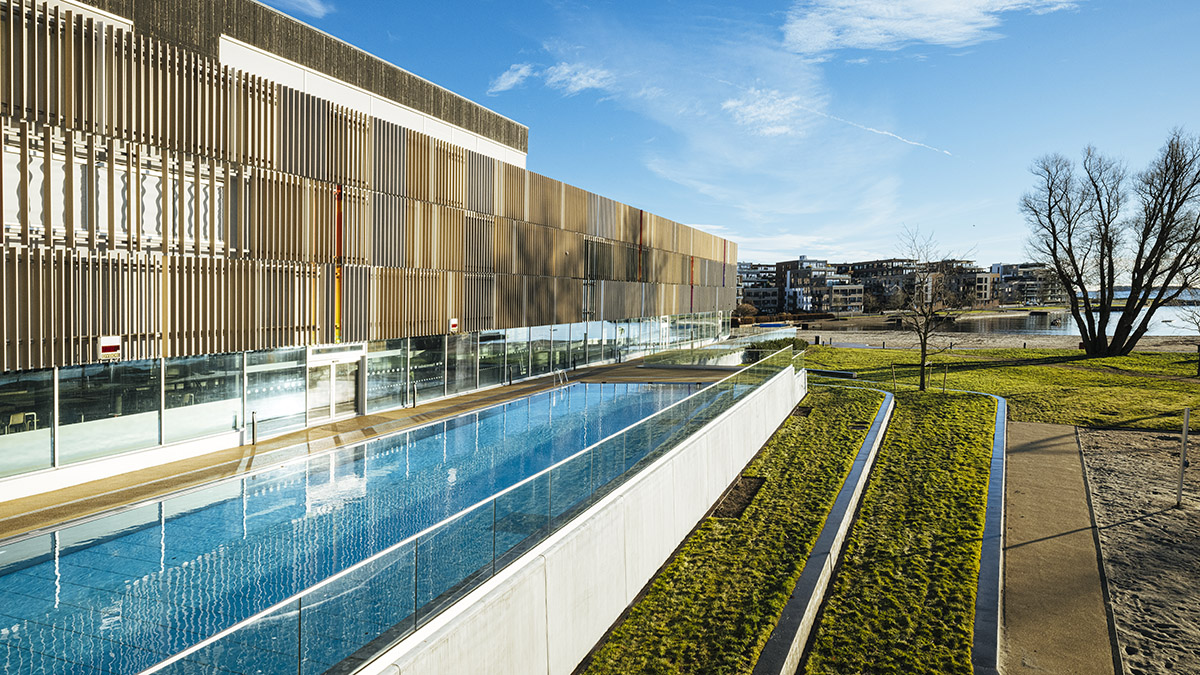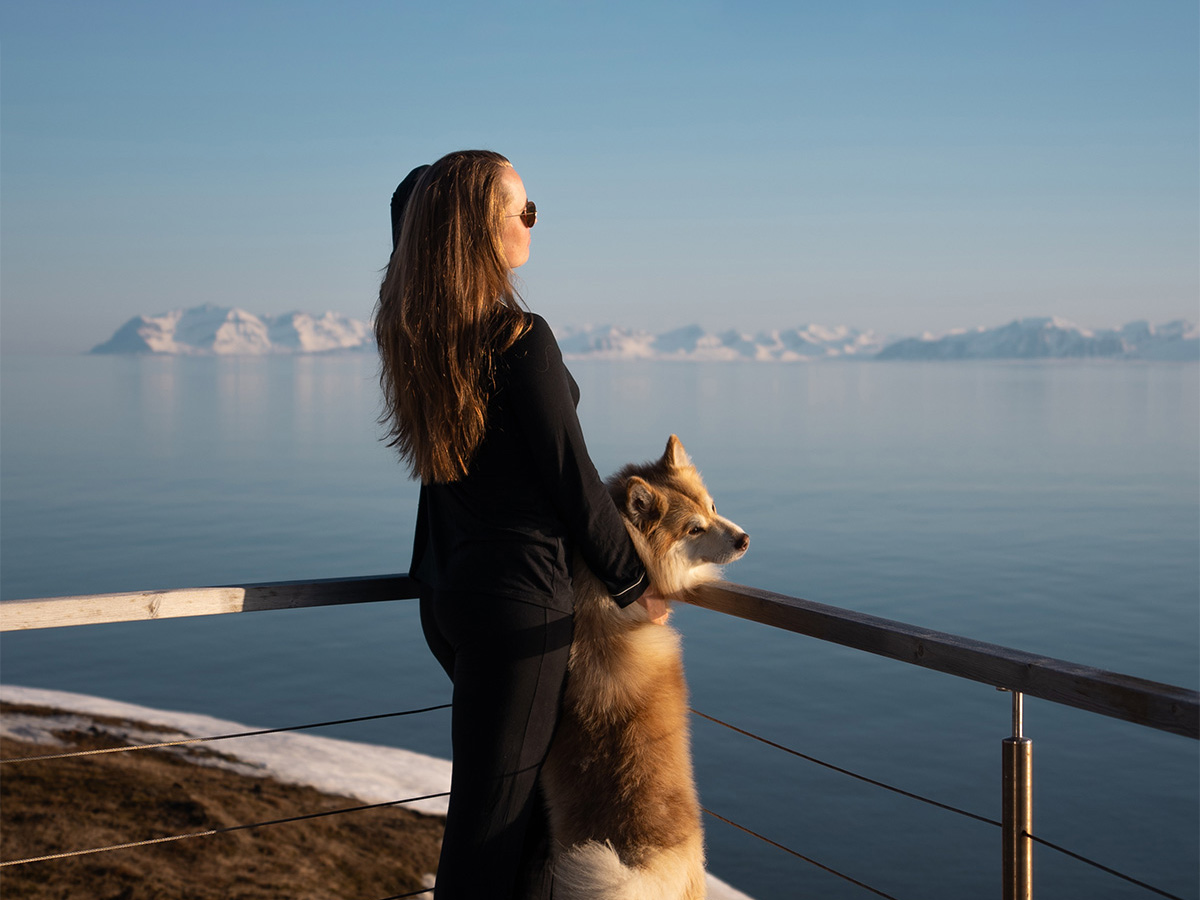Satu Maaranen: Marimekko and the future of sustainable fashion
Text: Marta Rusinowska, @a_girlwhotravels | Photos: Osma Harvilahti
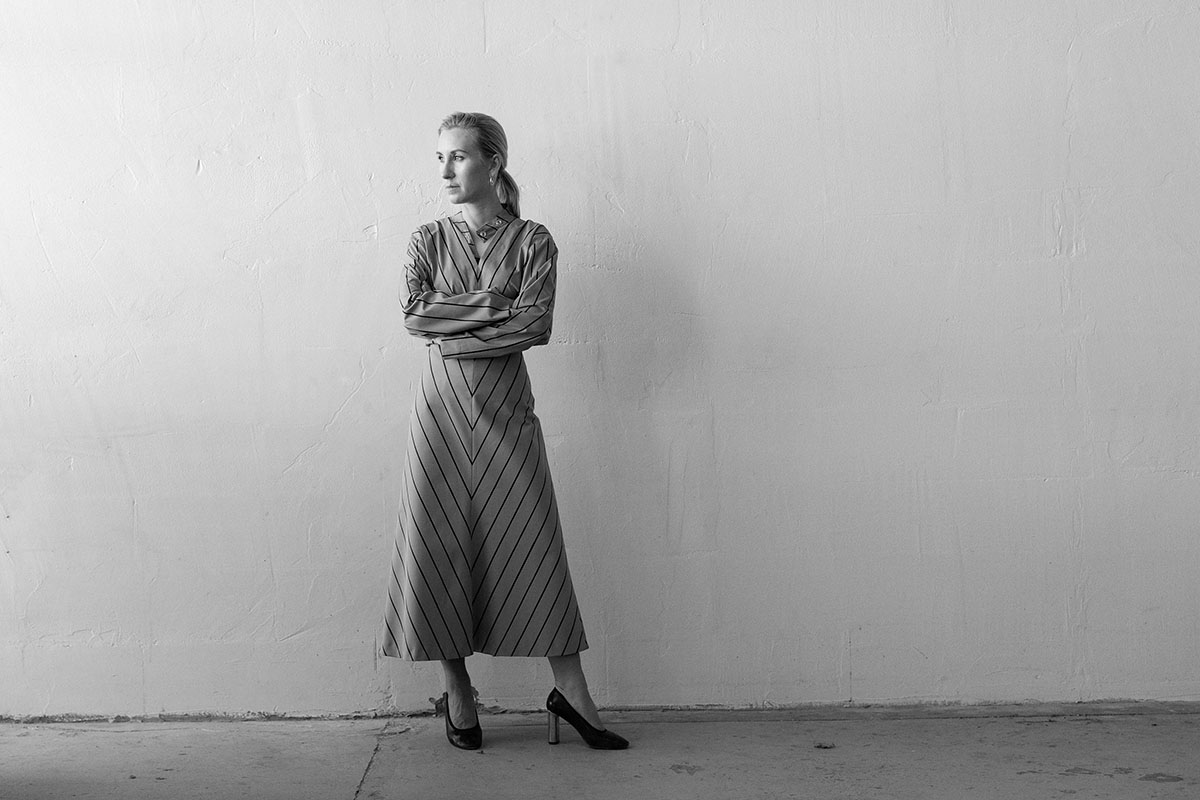
The future of global fashion is heading down the road of sustainability, and Nordic brands are paving the path. With Stockholm Fashion Week famously cancelled quoting sustainability concerns, and Copenhagen’s Global Fashion Agenda releasing new biodiversity standards, it’s no longer about the production process but the fashion eco-system as a whole. Scan Magazine caught up with Satu Maaranen, the head designer of Marimekko’s ready-to-wear, bags and accessories, to discuss.
Maaranen’s professional ambition is rooted in sustainability, and it’s no surprise that Marimekko makes her feel right at home. “Sustainability is a subject very close to my heart,” she says. “My job is to design long-lasting products that delight over and over again. At Marimekko, we don’t follow fashion trends. Instead, we focus on creating products that last and continue to inspire. Sustainable thinking in this sense is very important to us, and we work on developing this area more and more.”
The machines at Marimekko’s textile printing mill have been rolling for nearly seven decades, producing one million metres of fabric every year, but the brand’s vision goes beyond colourful garments. “Our goal is to bring joy into the everyday life through functional, timeless design and bold prints, inspired by our Nordic roots,” Maaranen explains. “Throughout the decades, Nordic nature has been one of the biggest inspirations to Marimekko pattern designers. In Finland, we have a very strong connection to nature – the summer cottage culture, long walks in the forest… If you were to look through our pattern archive, you’d notice that most patterns, even though they may look abstract, are inspired by nature.”
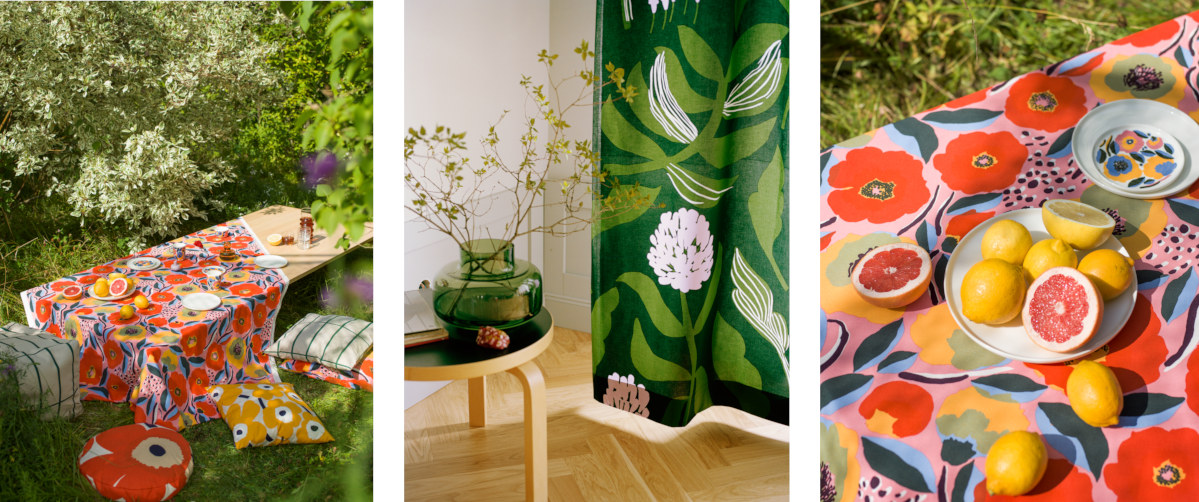
Eco-innovation meets Nordic feminism
While Marimekko’s vision retains a refreshing sense of continuity, its approach to market demand and sustainability continues to evolve, setting the bar, and expectations, high. The printing factory, one of the last of this kind to operate on a commercial scale in the Nordics, runs on biogas and renewable electricity, with Better Cotton Initiative (BCI) representing 88 per cent of all sourced cotton.
With over two-thirds of products made in Europe and a focus on local production, Marimekko’s material strategy weaves innovation and eco-thinking into the mix. The results speak for themselves. Its recent collaboration with Spinnova introduced a bold innovation in sustainability, setting a new tone for the future of the textile market. “We worked closely with Spinnova to assist in the development and market entry of a completely new, wood-based textile,” says Maaranen. “The first prototypes showed a great deal of promise – we are very excited about them! The fabric isn’t available commercially just yet, but it’s still a major step.” The head designer admits that the passion for innovation has been fuelling the brand since the very beginning: “Marimekko’s founder, Armi Ratia, was a true visionary. She was a pioneer at a time when there weren’t many female executives in the Nordics. It was very rare to see a woman heading up a design house. The Nordic equality in that sense is very much in our DNA.”
‘Anti-fashion’ as an ongoing trend
Since its conception in 1951, Marimekko has been recognised for its abstract patterns and vibrant colours, going against decades of restrictive fashion and giving women the confidence to express themselves outside of the status quo. Marimekko made waves thanks to its ‘anti-fashion’ attitude, which remains a part of its creative credo still to this day. Maaranen explains: “Timeless design thinking is the number-one drive behind everything we do, including our design decisions. Timelessness for me and Marimekko means that the design language lasts through different decades – that it’s not too trendy but functional, creating designs that are easy to combine with your wardrobe.”
With Nordic heritage taking centre stage in Marimekko’s product and design philosophy, what is the place for Scandinavian design in the modern world? To Maaranen, it comes down to simplicity. “Scandinavian fashion and design are the ultimate everyday luxury. Scandinavian design is for everybody, which is very much connected to functionality. When something is for everybody, the prices aren’t overwhelming, and the products are designed to make your everyday life better. That’s very much what Scandinavian luxury is about.”
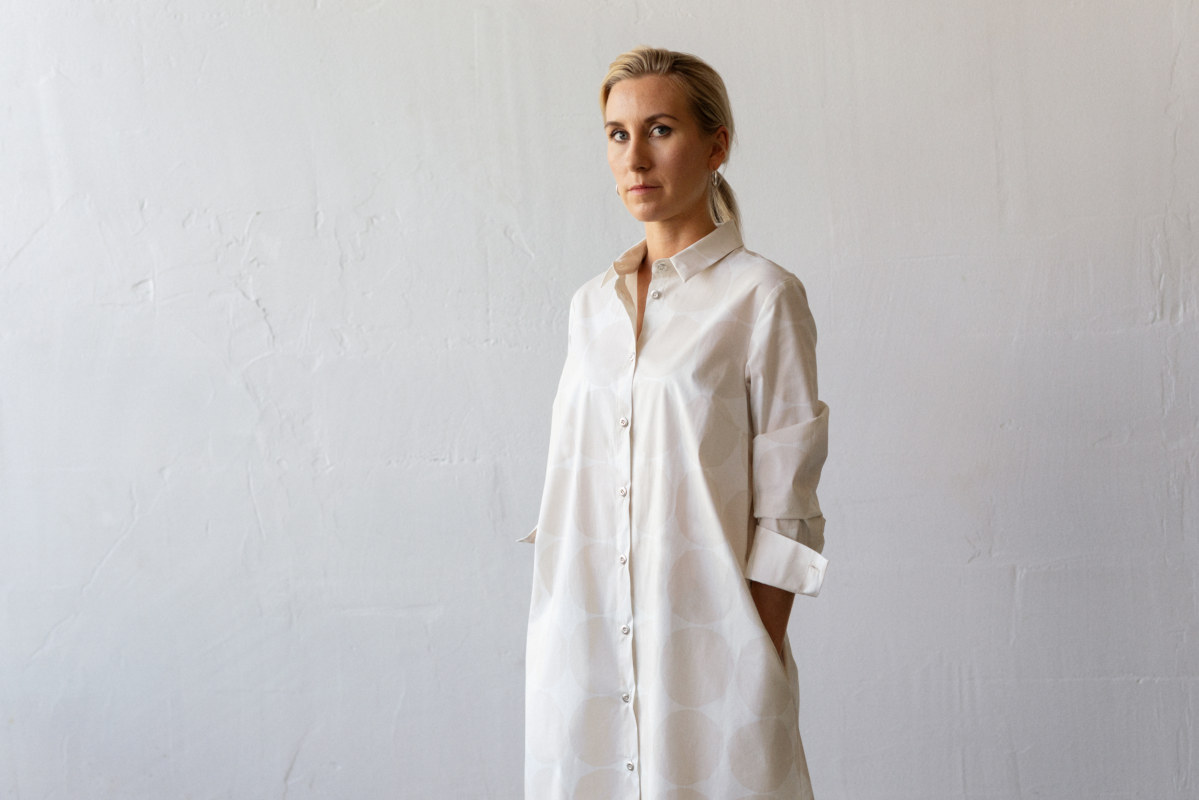
The future of sustainable fashion in the Nordics
The conversation inevitably turns towards the future. What does the new decade hold for sustainable fashion in Scandinavia and the Nordics? Maaranen is quick to reply: “The fast-fashion trend will get smaller and smaller, as customers become increasingly interested in products that last,” – an advantage, undoubtedly, for brands like Marimekko, whose identity is closely tied to longevity. “In the near future, big fashion shows will be fading away. There’s so much construction and material that’s immediately thrown away after the shows, and there has to be a more sustainable way of addressing this. All in all, local production will become more appreciated. Luckily, Marimekko has its own factory, which is a big plus for us. Most of our cotton is printed at our own mill, which makes it very special.”
Maaranen indicates sustainability as the number-one challenge for modern designers. “Sustainability should be everyone’s focus,” she says. “Everything else is secondary, because it is, in a way, linked to sustainability. The way we make our design decisions, the types of fabrics we use, where and how they are produced, the way we work with factories, and the subject of local versus global… all these elements are linked to sustainability. Ultimately, our mission should be to take care of the nature and the planet.” With sustainability increasingly in the limelight, Maaranen believes that the role of fashion designers will dramatically change, undergoing a shift from designing to re-designing – creating new pieces from already-existing products and materials.
Building a sustainable future
Marimekko’s goals continue to be driven by the same ambition that had Armi Ratia famously say, “I really don’t sell clothes, I sell a way of living”, as the team is currently conducting studies to support the new sustainability strategy.
With the future as bold and bright as the cult Unikko print, one thing is certain: Marimekko’s sustainability journey is just the beginning, and an indication of what’s to come – not only for the brand, but for the Scandinavian fashion industry as a whole.
Web: www.marimekko.com Facebook: marimekkodesignhouse Instagram: @marimekko
Subscribe to Our Newsletter
Receive our monthly newsletter by email


